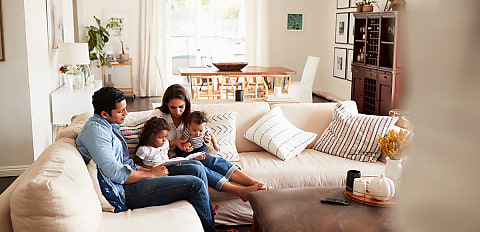Across Australia, 61 per cent of households are made up of one to two people, as reported in a recent study by Cotality.
Broken down, 27 per cent of households are occupied by a single person and 35 per cent by a couple with no dependents.
Thirty per cent are couples/single parents with dependents, 4 per cent are group households, 2 per cent are multiple families, and another 2 per cent are other families.
The majority of households only require a bedroom or two. However, most Australian properties have three-plus bedrooms.
Just 18 per cent of properties across Australia have two bedrooms. The majority (42 per cent) are three-bedroom homes.
Another 28 per cent have four bedrooms, 6 per cent have five-plus bedrooms, and 6 per cent are 0-1 bedroom homes.
Cotality labelled this issue “the great mismatch” as small groups of occupants are occupying larger-than-necessary homes due to the make-up of Australian property.
It is common for properties to have more bedrooms than occupants. The new age of working post-pandemic means many are working remotely and require home offices.
Another trend impacting the data is the declining birth rate in Australia. The latest birth rate data released by the ABS in October last year revealed there was a total fertility rate of 1.50 babies per woman in 2023.
This was a “record low” with ABS head of demography statistics Beidar Cho attributing the change to people waiting longer to have children.
“The long-term decline in fertility of younger mums as well as the continued increase in fertility of older mums reflects a shift towards later childbearing. Together, this has resulted in a rise in median age of mothers to 31.9 years, and a fall in Australia's total fertility rate,” Cho said.
The cost-of-living crisis is also playing a factor. Having children is expensive and the cost burden alone is enough to put off starting a family.
Despite these cultural shifts, the housing market continues to cater to family dynamics.
The 2021 census from the ABS found that the average household size has shrunk from 5.5 people in 1911 to 2.5 people as of 2021.
The same census revealed that there were more two-person households in three-bedroom homes (about 1.3 million) than three or four-person households (about 1.1 million).
So, while some households are in bigger homes than they need, larger families are being locked out.
Cotality noted that fixing the issue comes with challenges. One proposed solution could be to abolish stamp duty, making it cheaper to move homes.
This could be replaced with a land tax which is more expensive depending how much land is owned.
While this may incentivise people to downsize, especially older Australians who don’t need the room anymore, Cotality believes it would be “politically difficult” to introduce.
“Reforming pension asset tests to include the value of the family home would also help the numbers stack. Strides are already being taken on the supply side to establish well-located apartments in our larger cities, that can accommodate smaller households, but shifting demand through tax reform could help the take-up of these new homes,” Cotality said.
What’s clear from this study is that apartment living is a viable option for the majority of small family Aussies.
With the pressure of raising a large family becoming harder and societal norms shifting, the property market may need to accommodate to these changes.
[Related: Borrowers leveraging rate cuts to upsize their home]

